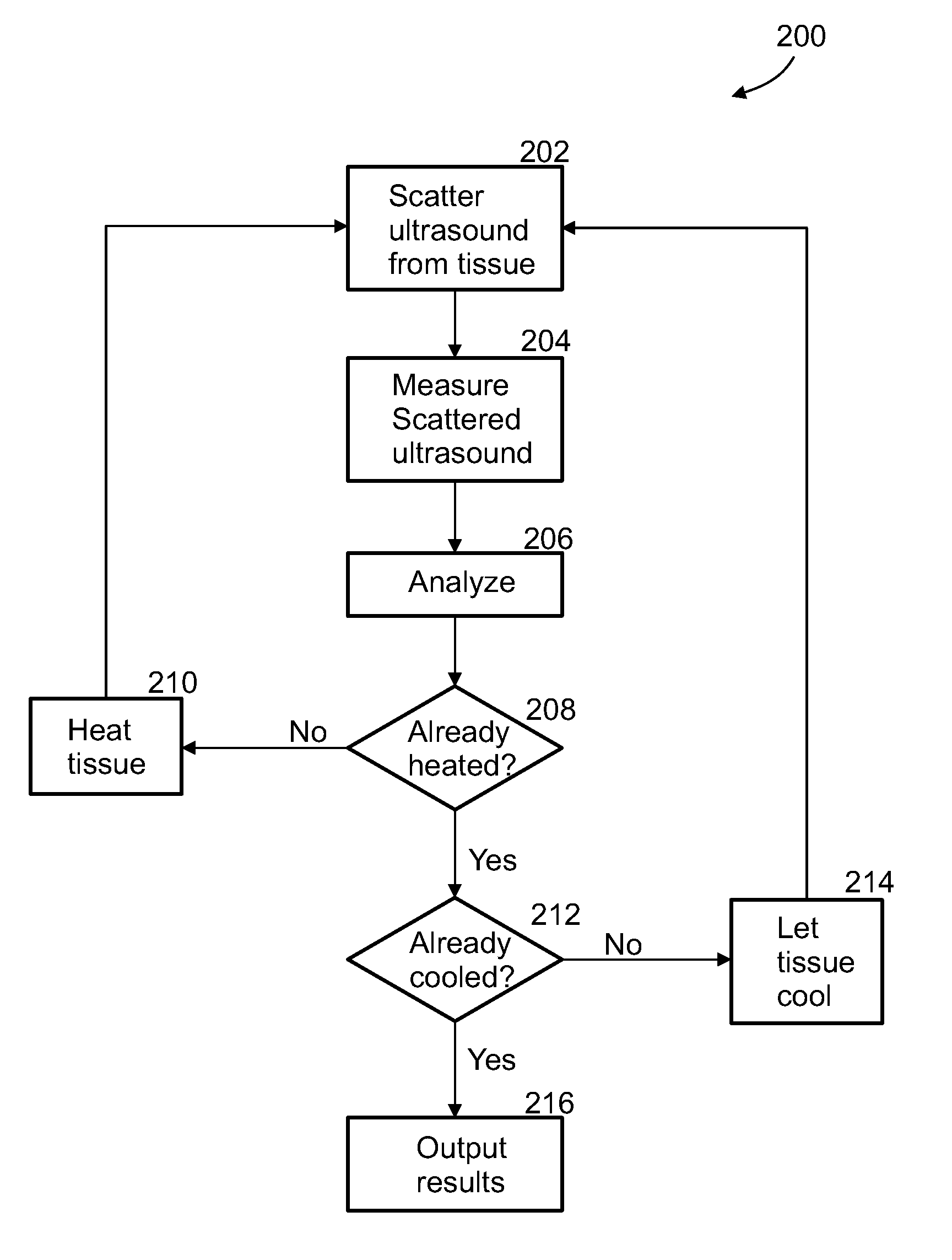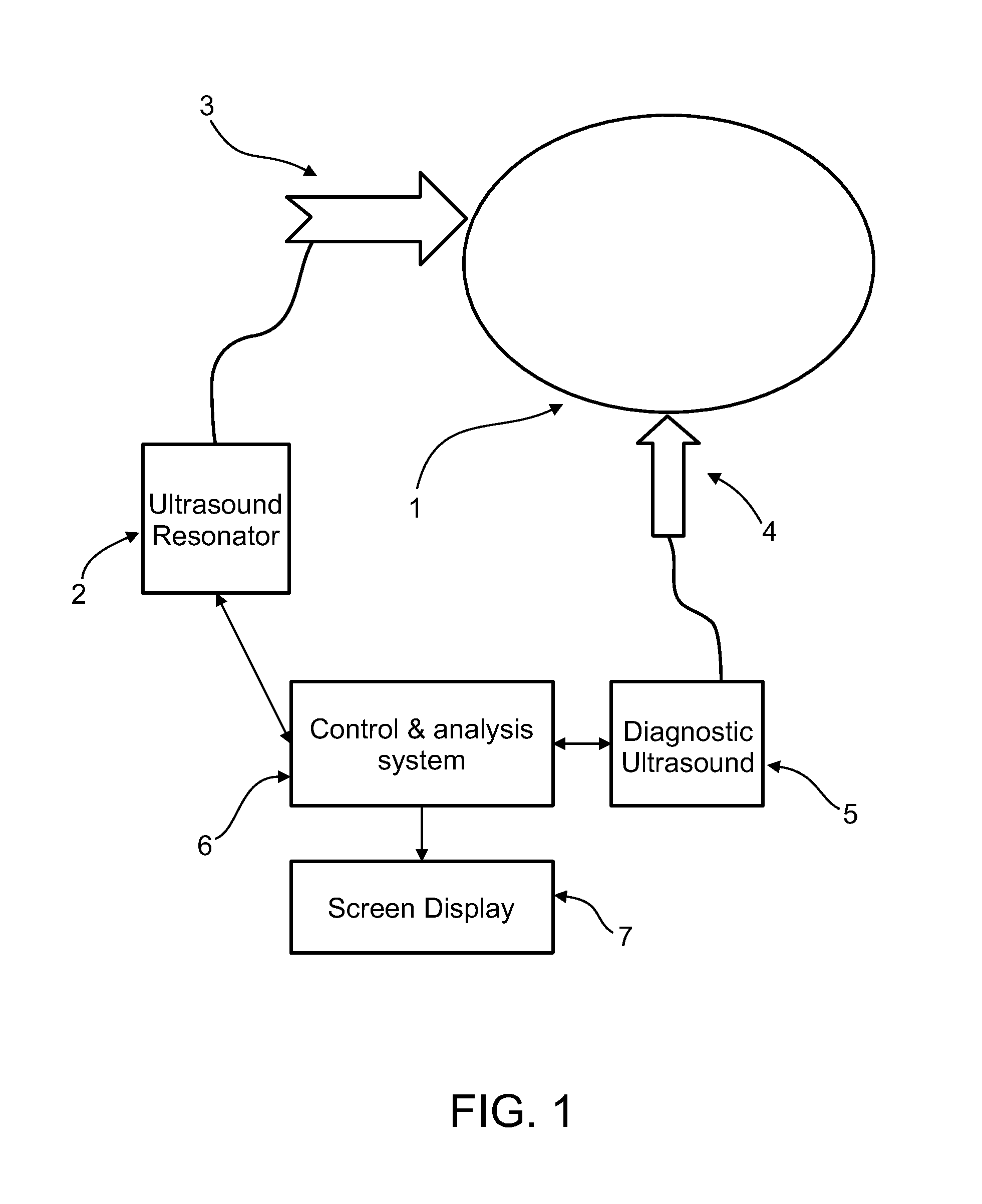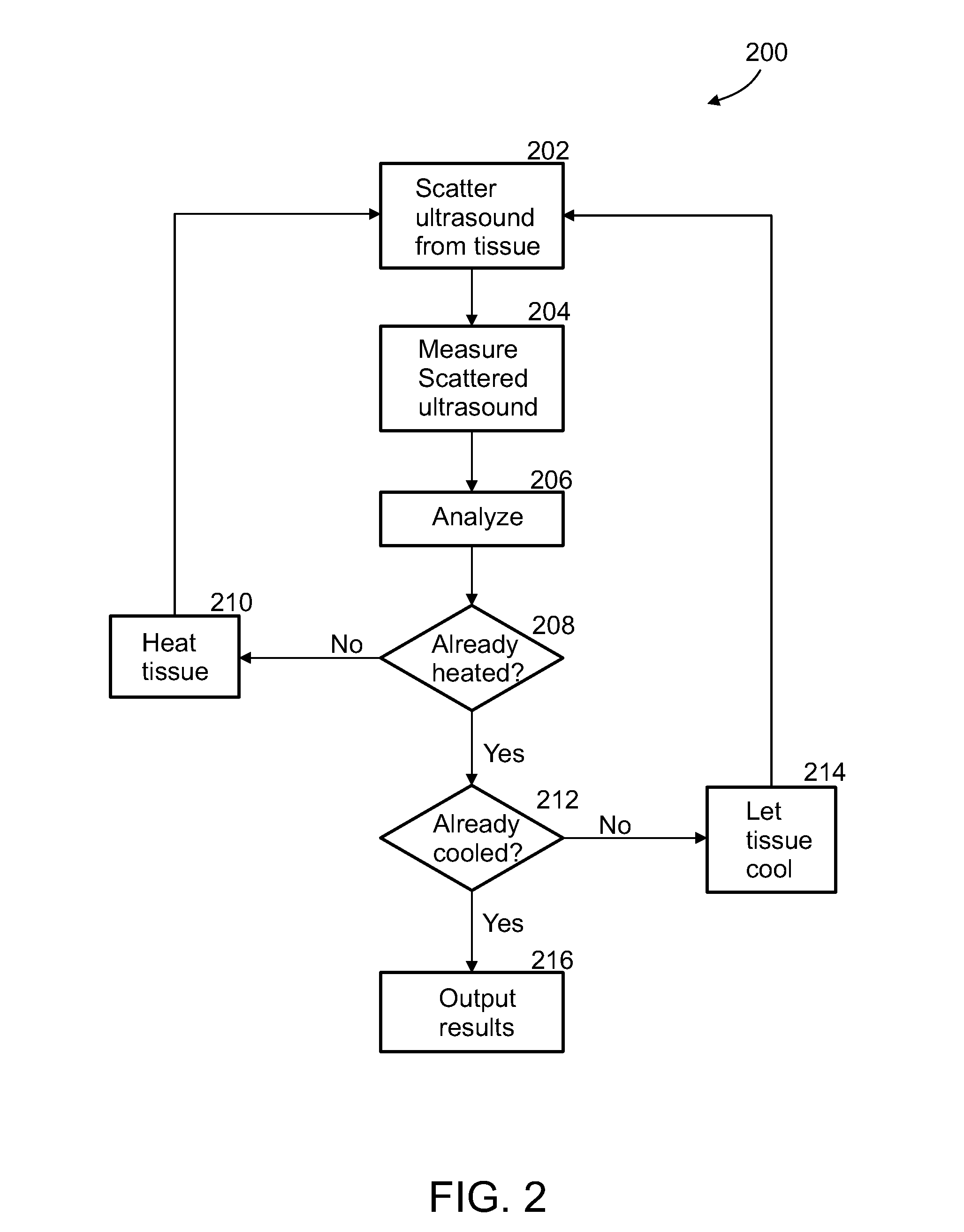Method and system for tissue imaging and analysis
a tissue imaging and analysis technology, applied in the field of backscatter waveform measurement, can solve the problems of reducing the capacity of this technology to enable continued imaging, affecting the patient and physician, and limiting the identification of desirable tissue, so as to achieve high resolution, accuracy, and precision
- Summary
- Abstract
- Description
- Claims
- Application Information
AI Technical Summary
Benefits of technology
Problems solved by technology
Method used
Image
Examples
Embodiment Construction
[0089]An aspect of some embodiments of the invention concerns a method and system for the imaging or identification of tissue type or substance and / or irregularities based on its behavior under ultrasonic heating over time. The system includes an ultrasound resonator for differential heating of different types of tissue, and the same or another ultrasonic device or machine measuring changes in ultrasonic backscatter over time, as a result of tissue heating. In addition, the system includes computer algorithms analyzing ultrasonic backscatter patterns and gradients, as a result of the heating in the examined area over time and location to image the internal subregions of tissues in the examined area. The system is built from single / multiple ultrasonic frequency transmitters, transmitting ultrasonic waves at certain frequency or frequencies, certain amplitude / amplitudes and energy levels. The exposed area is heated; it absorbs some of the ultrasonic energy, and as a result, changes it...
PUM
 Login to View More
Login to View More Abstract
Description
Claims
Application Information
 Login to View More
Login to View More - R&D
- Intellectual Property
- Life Sciences
- Materials
- Tech Scout
- Unparalleled Data Quality
- Higher Quality Content
- 60% Fewer Hallucinations
Browse by: Latest US Patents, China's latest patents, Technical Efficacy Thesaurus, Application Domain, Technology Topic, Popular Technical Reports.
© 2025 PatSnap. All rights reserved.Legal|Privacy policy|Modern Slavery Act Transparency Statement|Sitemap|About US| Contact US: help@patsnap.com



